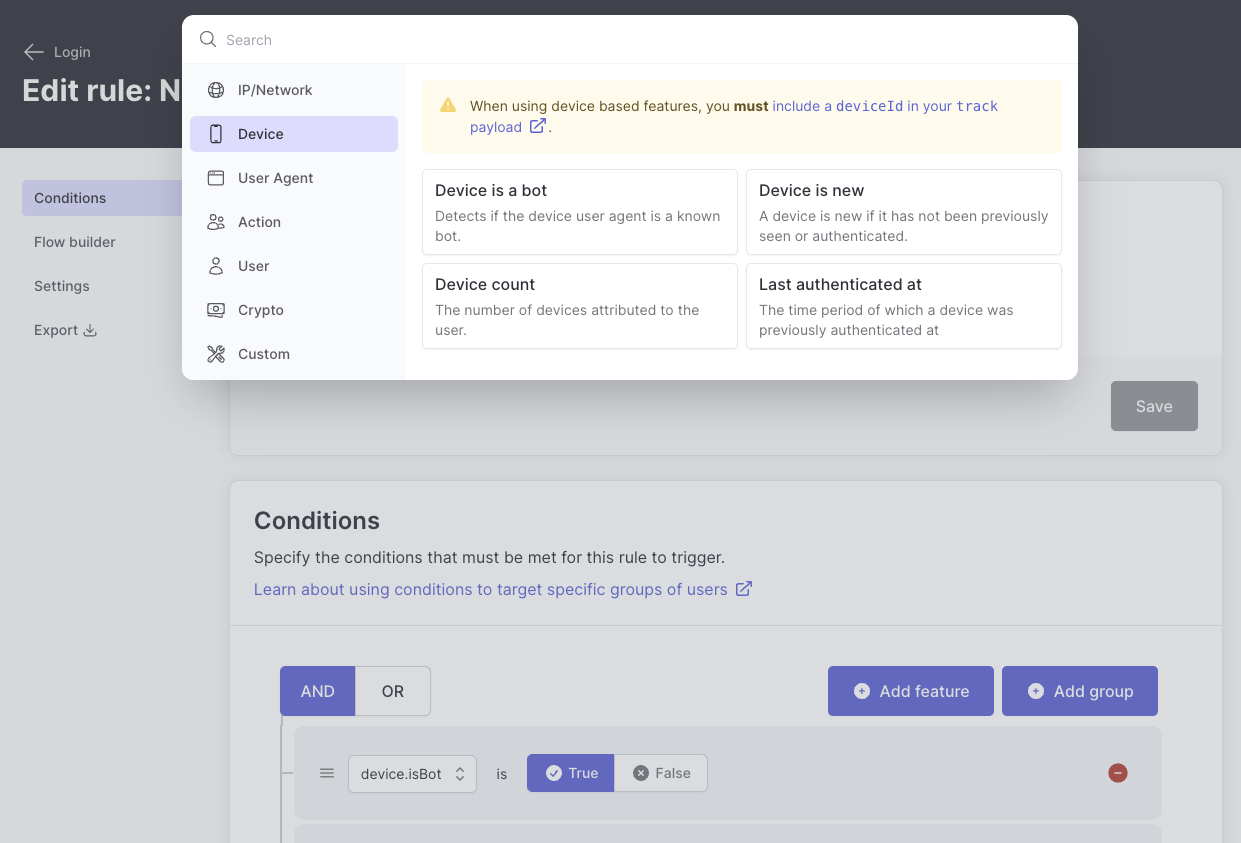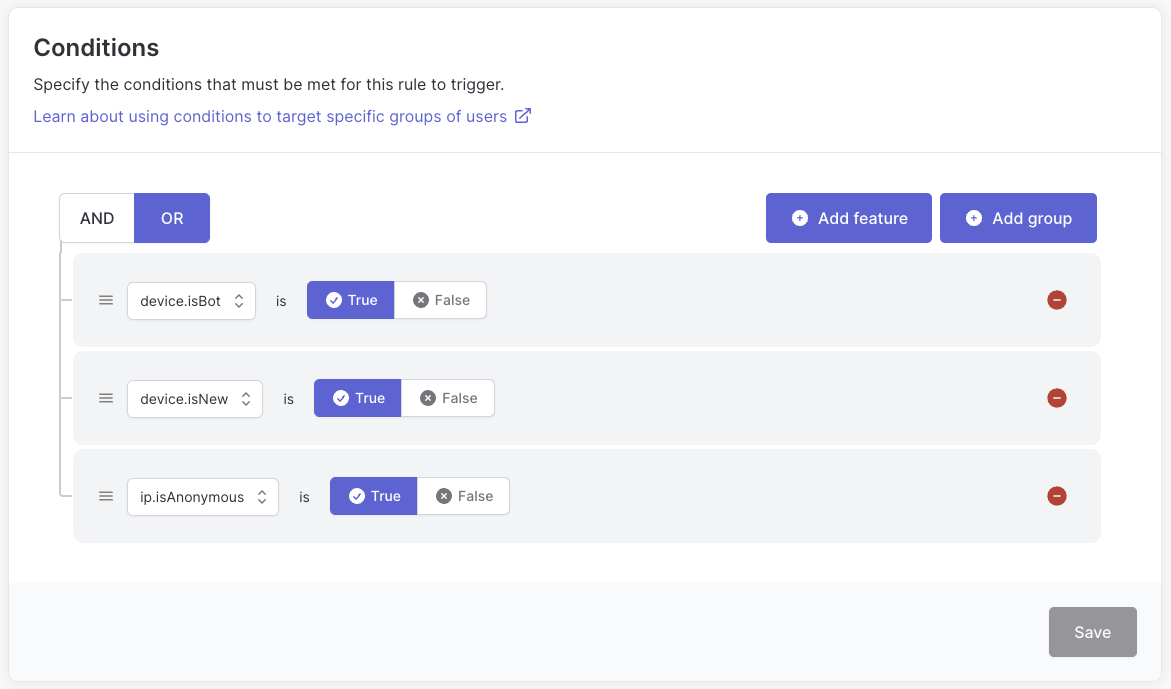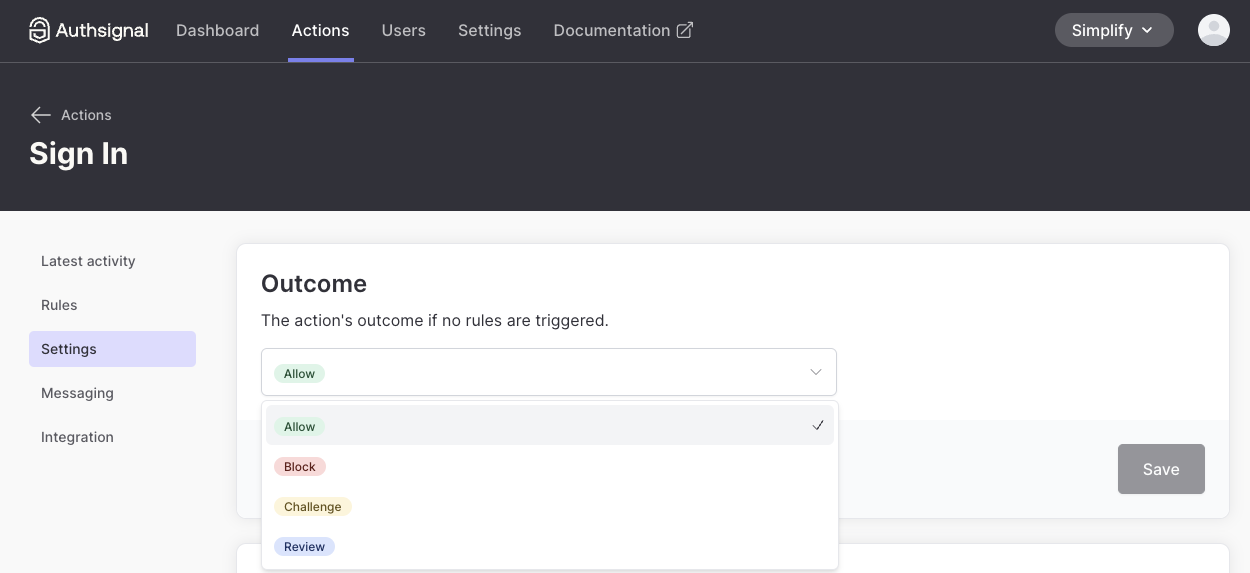Creating a rule
To create a rule, navigate to your action (e.g., withdraw-funds) and click the Rules tab. Then click “Create rule” and provide a name and description.Core components of a rule
When you create a rule in Authsignal, you’re defining the logic that determines when additional security measures are required. Here’s what a rule contains:1. Conditions
Define the criteria that will trigger the rule using various data points, for example:- Device characteristics: New devices, device count
- IP/Network data: Anonymous IPs, country codes, impossible travel detection
- Custom data points: Your business-specific data like transaction amounts, account tiers
2. Outcomes
When a rule’s conditions are met, it can override the action’s default outcome with any of the four available action outcomes (ALLOW, CHALLENGE, REVIEW, or BLOCK). This allows you to apply outcomes dynamically based on risk assessment rather than using a static default.

Using rules with actions
Rules work seamlessly with your existing action tracking. When you track an action, Authsignal evaluates all applicable rules and returns the appropriate outcome.- Custom UI
- Pre-built UI
Creating a rule to challenge high-risk users
Let’s walk through creating a practical rule that automatically challenges high-risk users while allowing trusted users to access your application seamlessly.1. Create a rule
- Navigate to your
signInaction and click the Rules tab - Click Create rule and name it Challenge “high-risk” users
- Click Continue to proceed to rule configuration
2. Add conditions
We’ll determine a user as ‘high-risk’ if they meet any of the following conditions:- Are detected as being a bot
- Are on a new device
- Are using an anonymous IP address
- Click Add feature and then Select feature
- Choose the Device category and select Device is new
- Repeat for Device is a bot (Device category)
- Repeat for IP is anonymous (IP/Network category)

- Change the conjunction logic from AND to OR so the rule triggers if any condition is met

3. Set the outcome
- Set the rule outcome to
CHALLENGEso high-risk users will be prompted for additional verification, then click Save. - Return to the Rules page of your
signInaction. You should see your new rule listed.

4. Configure default action outcome
- Navigate to your action’s Settings tab
- Change the default outcome to
ALLOW - Click Save

5. Update your track call
Now that you have created the rule, you’ll need to update your track action call to include some additional fields:deviceId, ipAddress, and userAgent.
- Custom UI
- Pre-built UI
Note: When using the Authsignal Web SDK, you can obtain the deviceId from the
__as_aid cookie that’s automatically created on the client side.
